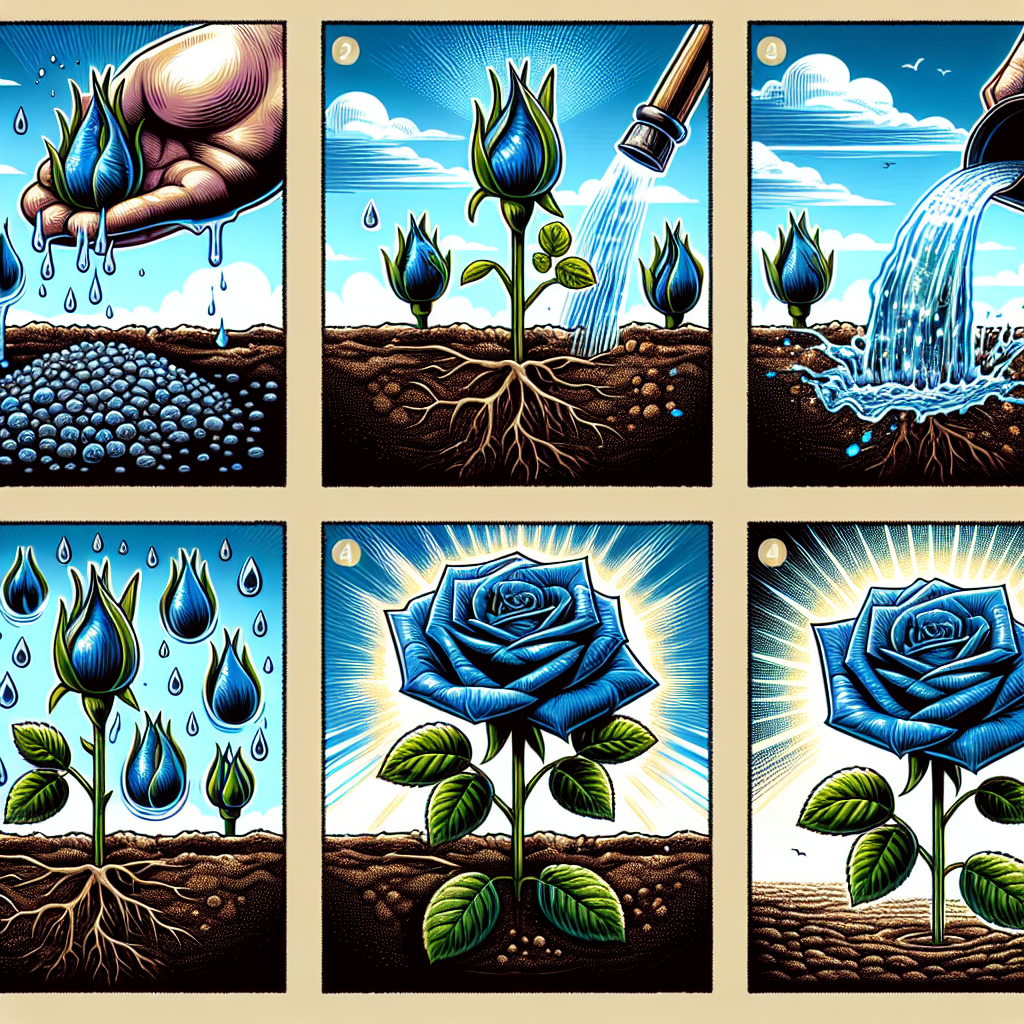
How to grow blue roses from seeds
Introduction to Growing Blue Roses
For many gardening enthusiasts, the pursuit of cultivating blue roses is a tantalizing challenge. Blue roses are symbolic of mystery and the unattainable since they do not occur naturally in nature. They are often associated with love and longing. While true blue roses do not exist, hybrid roses that offer a bluish hue have gained popularity. In this article, we will delve into the process of how to grow blue roses from seeds, explore the science behind growing them, and discuss care tips to ensure your blue roses bloom beautifully.
The Science Behind Blue Roses
So, what makes blue roses so special? The color blue in flowers is primarily due to the presence of specific pigments. Traditional roses lack the genes required to produce blue pigments. However, through genetic engineering and hybridization, scientists have developed roses with bluish tones, such as the ‘Blue Moon’ and ‘Blue Girl.’
These genetically engineered variations still do not produce true blue flowers, but they can offer shades of lavender and mauve, which give the impression of blue. By understanding the breeding processes, you can appreciate the labor that goes into cultivating these flowers.
Selecting the Right Seeds
When embarking on your journey of how to grow blue roses from seeds, the first step involves selecting the appropriate seeds. Here’s what you need to keep in mind:
- Choose Hybrid Varieties: Opt for hybrid rose varieties that are bred specifically for their blue characteristics. Varieties such as ‘Blue Moon,’ ‘Rhapsody in Blue,’ or ‘Blue Girl’ are good choices.
- Check Seed Viability: Ensure that the seeds you purchase are fresh and have a high germination rate. Look for reputable suppliers or nurseries.
- Know Your Climate: Consider your local climate conditions and select seed varieties that are well-suited for your area.
Starting Your Seeds
Once you have your seeds, it’s time to start the growing process. Here’s a step-by-step guide:
- Gather Your Materials: You will need seed trays, potting soil, a spray bottle or watering can, and clear plastic covers.
- Prepare the Soil: Fill the seed trays with high-quality potting soil, ensuring there’s adequate drainage. You may want to mix in some sand or perlite to improve aeration.
- Sow the Seeds: Plant the seeds at a depth of about 1/4 inch. Make sure to space them adequately to allow for growth.
- Water Gently: Use a spray bottle to moisten the soil without displacing the seeds. Keep the soil consistently damp but not soggy.
- Create a Greenhouse Effect: Cover the trays with clear plastic to retain moisture and warmth, creating a mini-greenhouse environment.
Germination Conditions
For successful germination of blue rose seeds, you must create the right conditions:
- Temperature: Maintain a temperature of 70-75°F (21-24°C) for optimal growth.
- Light: Once seeds start to germinate, place them in a location that receives indirect sunlight.
- Humidity: Keep an eye on humidity levels. Remove the plastic cover once seedlings appear to prevent mold growth.
Transplanting Seedlings
After a few weeks, you should see your seedlings emerging. At this stage, it's crucial to prepare them for transplanting.
Follow these steps:
- Thin the Seedlings: If multiple seeds germinate in one section, thin them out to prevent overcrowding.
- Transplanting: Wait until the seedlings are about 2-3 inches tall before transplanting them into individual pots.
- Hardening Off: Gradually acclimatize your seedlings to outdoor conditions by placing them outside for a few hours each day over a week.
Planting in the Garden
Once the seedlings are hardened off, it’s time to plant them in the garden:
- Choose a Location: Select a spot in your garden that receives at least 6-8 hours of sunlight daily.
- Soil Preparation: Amend the soil with organic compost to improve nutrient content and drainage.
- Spacing: Space your plants at least 2-3 feet apart to ensure proper air circulation.
Care and Maintenance
To successfully grow your blue roses and encourage them to thrive, proper care and maintenance are vital. Here are some important tips:
Watering
Roses require consistent moisture, especially during their initial growth stages. Water your plants deeply once a week, allowing the soil to dry slightly between waterings. Early morning is the best time to water your roses; it helps prevent fungal diseases.
Fertilizing
Feed your blue roses with a balanced rose fertilizer every 4-6 weeks during the growing season. Follow the manufacturer's instructions to prevent over-fertilization, which can harm your plants.
Pest Control
Keep an eye out for common rose pests such as aphids, spider mites, and whiteflies. If you notice any infestations, treat them promptly with insecticidal soap or neem oil. Regularly inspect your plants to ensure their health.
Pruning
During late winter or early spring, prune your blue roses to promote healthy growth. Remove dead or diseased wood and shape the plants for better airflow. This encourages new growth and blooms, enhancing their vibrant colors.
Ensuring a Bloom
When you cultivate roses, one of the key things you look forward to is the blooming phase. Here’s how to promote blooming effectively:
- Sunlight: Ensure your roses are getting ample sunlight. Insufficient light can lead to poor flower production.
- Deadheading: Regularly remove spent blooms to encourage the plant to produce more flowers.
- Patience: It may take a season or two for your blue roses to bloom fully. Be patient and continue providing care.
Conclusion
Growing blue roses from seeds is a rewarding yet challenging endeavor. While they may not produce true blue blooms, the hybrid varieties offer stunning colors that can enhance any garden. Following the steps outlined in this guide on how to grow blue roses from seeds will help you in successfully cultivating these enchanting flowers. With the right conditions, care, and a little bit of patience, you will enjoy the beauty of blue-hued roses that symbolize mystery and romance in your own garden.
By Guest, Published on September 16th, 2024